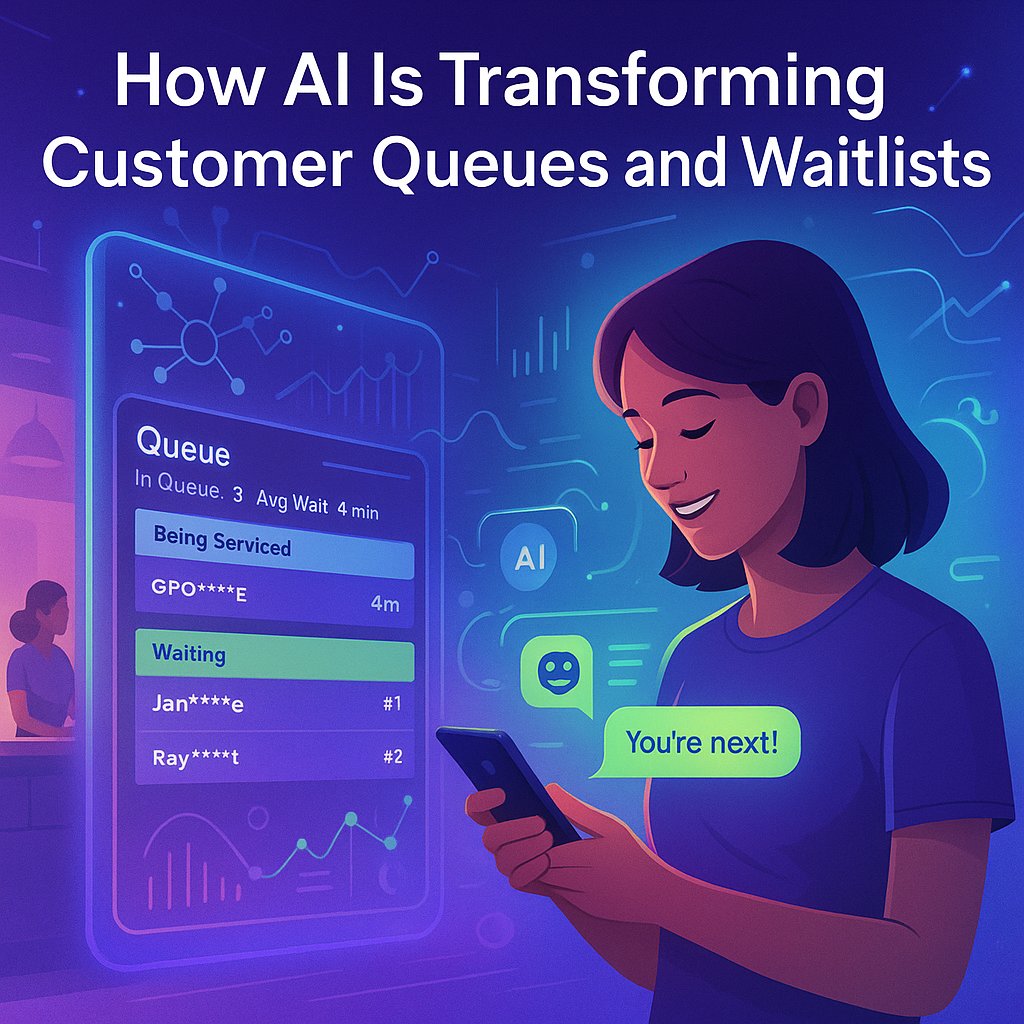🤖 How AI Is Transforming Customer Queues and Waitlists
Explore how artificial intelligence and natural language processing are revolutionizing queue management with predictive analytics and automated responses.

Introduction
Waiting has always been part of the customer experience — but now, artificial intelligence is changing that story.
AI isn't just making queues faster; it's making them smarter, more personal, and more predictive. Businesses are no longer limited to static "take a number" systems. With the rise of AI queue management, customers get real-time updates, natural language conversations, and accurate predictions about when it's their turn.
Let's explore how AI is transforming the modern queue and what that means for both customers and businesses.
1️⃣ Predicting Wait Times with Real Data
Traditional queue systems rely on averages. AI queue systems use live analytics.
Machine learning models track service patterns — time per guest, staff availability, peak hours, and customer flow — to predict wait times with up to 90% accuracy.
Customers see realistic expectations ("Your estimated wait is 12–15 minutes"), while managers get live insights to balance workloads.
Example: QueueMeIn's predictive engine continuously learns from historical queue data, adapting to real-time changes — a sudden rush, an absent staff member, or slower transaction patterns — and instantly updates customers by text.
2️⃣ Conversational Queues: Powered by Natural Language
Customers no longer need to memorize keywords like STATUS or LEAVE.
With natural language processing (NLP), AI can understand everyday messages:
- "Hey, how long is the wait?"
- "Can you hold my spot for 10 minutes?"
- "I'll be right there."
The system interprets intent and responds naturally. Instead of canned replies, customers enjoy a human-like conversation — while staff stay focused on service instead of texts.
3️⃣ Smart Routing and Queue Prioritization
AI doesn't just track who's next — it decides who should be next.
- Automatically group similar service types for efficiency.
- Prioritize urgent cases or high-value customers.
- Reassign staff dynamically as workloads shift.
This ensures faster service and balanced queues — no more uneven wait times or manual juggling behind the counter.
4️⃣ AI-Powered Insights for Managers
Beyond day-to-day queue handling, AI delivers strategic insights:
- Identify recurring bottlenecks by time of day or staff member.
- Predict peak traffic days based on weather, season, or historical data.
- Recommend staffing levels to reduce overtime and idle time.
These insights transform queue data into actionable intelligence for smarter scheduling, better customer satisfaction, and cost savings.
5️⃣ Continuous Learning and Personalization
AI learns from every interaction — every "extend," "cancel," and "status check."
Over time, it builds behavioral profiles, letting you personalize service:
- Predict when regular customers usually visit.
- Auto-fill preferences like preferred technician or service.
- Tailor follow-up messages for loyalty and retention.
This turns a simple waitlist into a customer relationship engine.
Conclusion
AI is redefining what it means to wait. Instead of frustration, customers experience confidence — because they're informed, understood, and engaged in real time.
For businesses, AI queue management means less guessing, more efficiency, and happier customers.
Ready to see how intelligent queuing feels?
Visit QueueMeIn.com and discover how AI + SMS are reshaping the future of waiting.
Ready for AI-Powered Queues?
Start your 14-day free trial and experience the future of queue management.
Start Free Trial